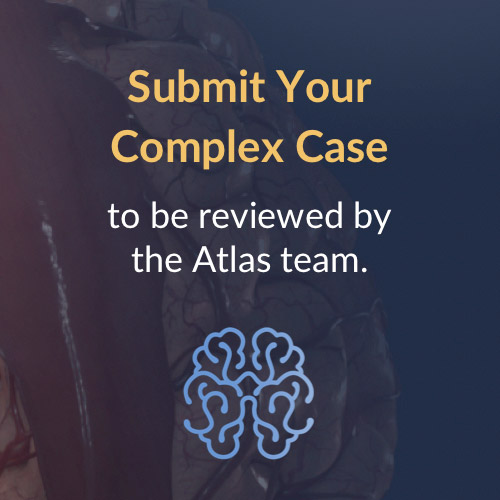Posterior Pontine Cavernous Malformation
This is a preview. Check to see if you have access to the full video. Check access
Transcript
Excision of posterior pontine cavernous malformations that reach the floor of the fourth ventricle is quite effective through the telovelar approach. This is a 42 year-old male with presented with progressive double vision and on MRI evaluation was noted to have a cavernous malformation along the posterior aspect of the pons reaching the floor of the fourth ventricle and the pial surface. On the sagittal image, T1 with our contrast, you can appreciate the coral rostral location of this lesion relative the tonsils and the applicability of the telovelar approach to reach the lesion. The patient was placed in a lateral position. The shoulders were immobilized out of the working zone of the surgeon and taped away. The head was turned approximately 45 degrees toward the floor. The shorter incision signifies the transverse sinus, the longer midline incision from the area just above the transverse sinuses to the spinous process of C2 was also used to expose the suboccipital bone. Neurophysiological monitoring was not used in this case, since the lesion reached very close to this pial surface. The arachnoid membranes over the tonsils and cisterna magna were released, and the foramen of Magendie was exposed. The telovelar membranes on the right side of the vermis were dissected. You can see the floor of the fourth ventricle. The surgeon has to remain very vigilant about the discoloration that localizes the location of the malformation. In this area, you can see some very minor discoloration related to our dissection and some swelling. This should not be mistaken for the location of cavernous malformation and careful meticulous dissection more superiorly, as you can see, demonstrated the obvious discoloration due to the reach of the cavernous malformation to the pial surface. Small portion of the vermis had to be transected. So I can reach the exact area of the malformation, the transversing vessel that was protected during the dissection. The malformation was removed piecemeal. B2 rongeurs are quite effective to remove the hematoma, decompress the malformation, and then go around the capsule of the malformation and remove the capsule and coagulate the feeding vessels. Although the malformation seems to be completely removed, there are these white strands that may represent malformation as well. This residual malformation is also removed until they gliotic margins are encountered. The gliotic margins are not removed in brainstem malformations to prevent the risk of injury to the vital surrounding structure. You can appreciate now that the gliotic surface versus some of the white bands and strands that frequently represent residual malformation. Here's the final view of the resection cavity. Minimal disruption of the normal structures is apparent. The post-operative MRI immediately after surgery confirms complete resection of the malformation without any complicating features. This patient's double vision improved within three months after surgery and the patient has since returned to work, thank you.
Please login to post a comment.




